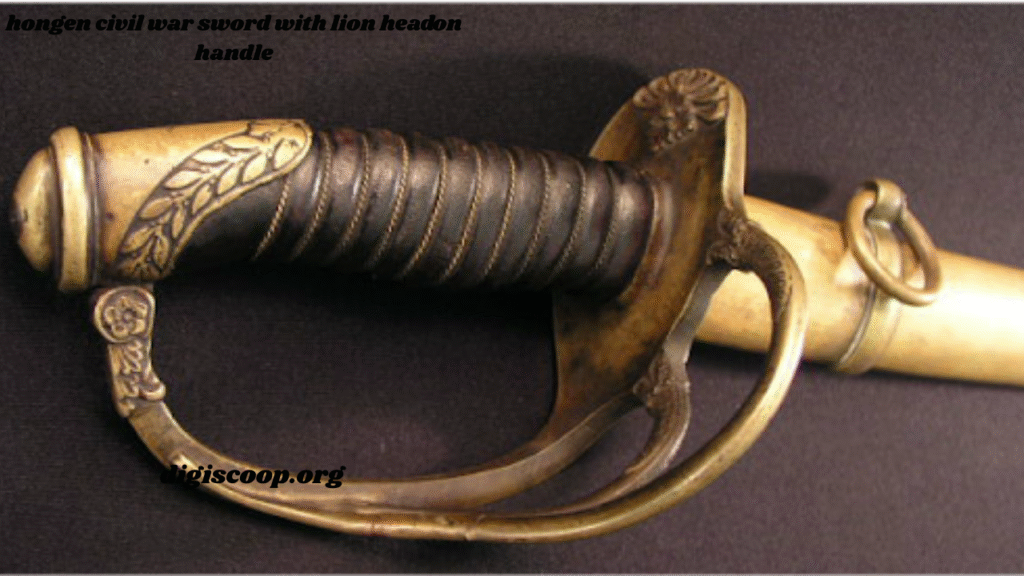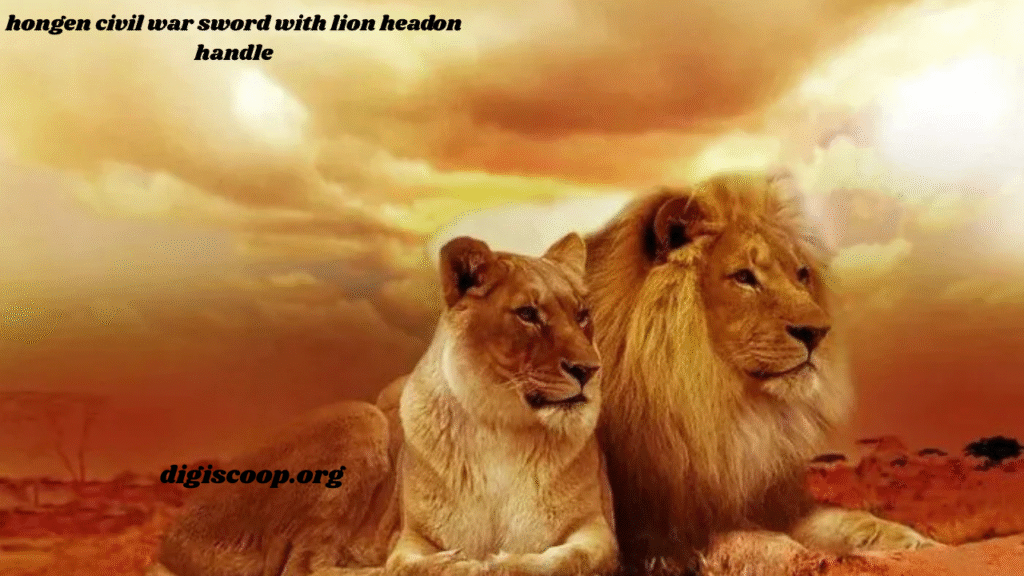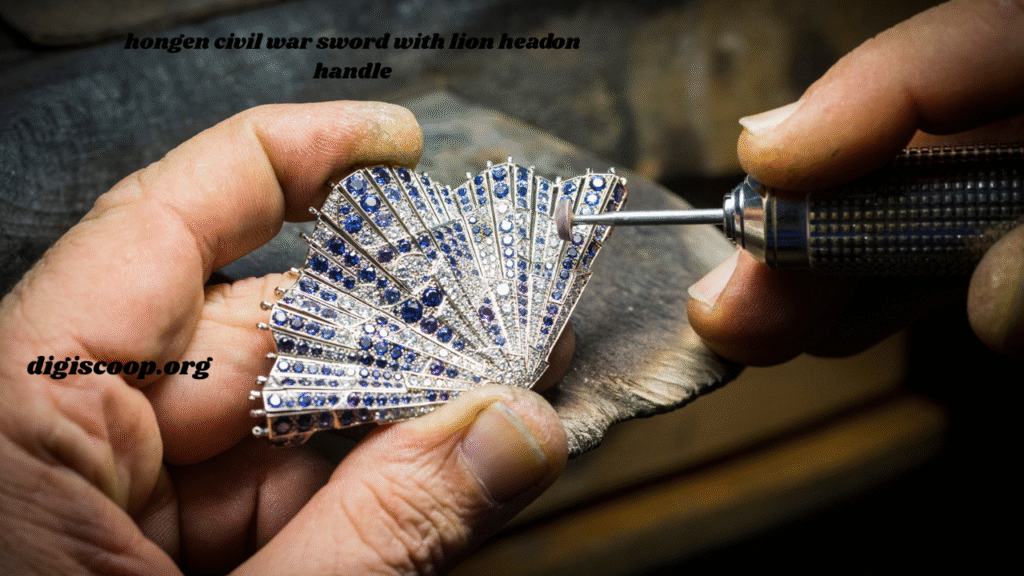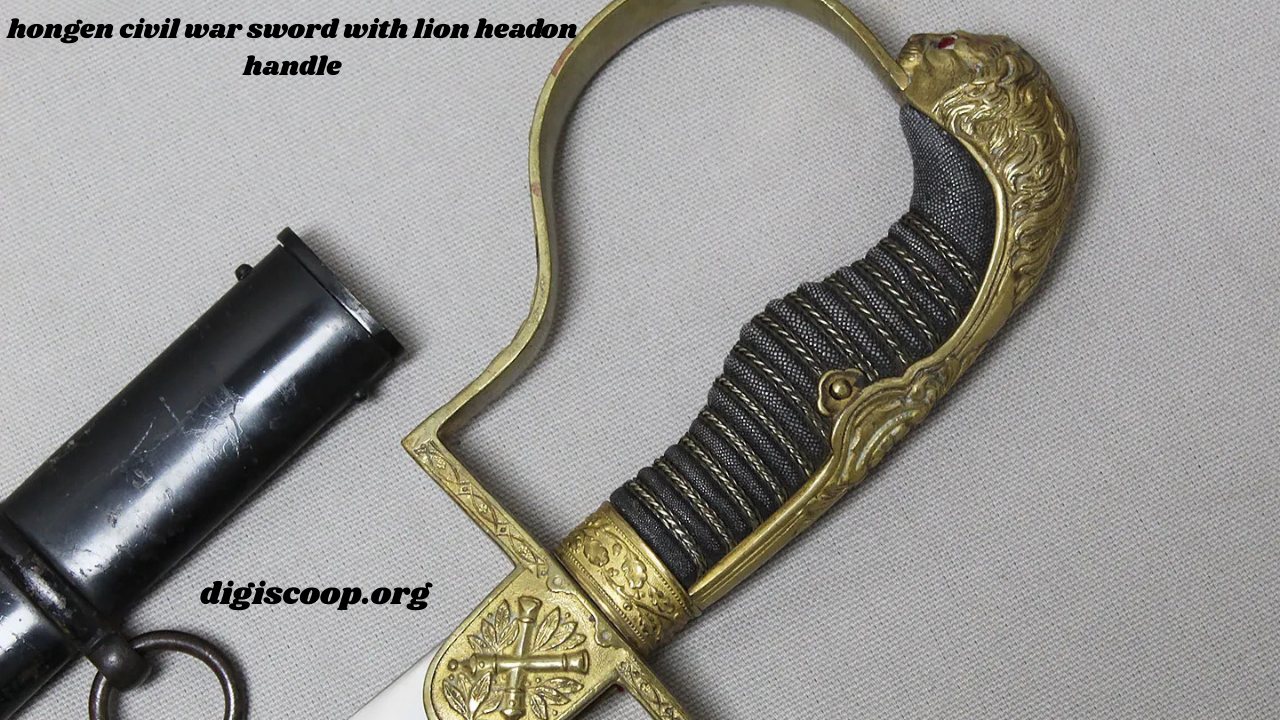The hongen civil war sword with lion head onhandle is a fascinating piece of weaponry that blends artistry, symbolism, and historical significance. Though often surrounded by mystery and varying accounts of its origins, this type of sword stands as both a practical tool of war and a statement of cultural identity. In this article, we will explore its background, construction, design, and lasting legacy in the world of historical arms and collectibles.
Origins of the Hongen Civil War Sword

The term hongen civil war sword with lion head on handle is associated with a period of conflict in which weapons were not only tools of survival but also markers of rank, honor, and authority. Swords with elaborate handles—particularly those featuring animal motifs like lions—were often carried by officers or leaders.
The lion has long been regarded as a universal symbol of courage, leadership, and power. In many cultures, attaching the head of a lion to a weapon signified dominance in battle and reinforced the wielder’s status. During civil wars, such symbolic embellishments often served to distinguish commanders from common soldiers, making the sword as much a sign of prestige as a weapon.
The Lion Head Handle: Symbolism and Function

The defining feature of the hongen civil war sword with lion head on handle is its hilt design. The lion head was not merely ornamental. It carried layers of meaning:
- Authority: The lion has been a royal emblem across civilizations. By incorporating it into a sword, the weapon projected command and nobility.
- Protection: Many believed animal motifs on weapons acted as spiritual guardians for the warrior.
- Craftsmanship Display: The handle was often carefully carved or cast, showcasing the swordsmith’s skill and the owner’s wealth.
From a functional standpoint, the lion head could also improve the grip, with its contours fitting the palm and preventing slippage during combat.
Materials and Craftsmanship

Swords of this nature were usually made with a combination of durable steel blades and ornate handles crafted from brass, bronze, or other metals. The lion head might be gilded, silver-plated, or inlaid with precious stones to further enhance its grandeur.
The hongen civil war sword with lion head on handle represents a blend of practicality and artistry. The blade itself would have been designed for cutting and thrusting, with a sharp edge maintained for close combat. At the same time, the attention to the handle design indicates that it was likely owned by individuals of higher status, possibly commanders, generals, or nobles engaged in the conflict.
Role in Civil War Battles
In times of civil unrest, swords often played dual roles—both as practical combat weapons and as symbols of allegiance. The hongen civil war sword with lion head on handle likely stood out on the battlefield, identifying leaders and rallying troops.
Civil wars tend to blur the line between organized military forces and personal militias. In such environments, distinctive swords helped create a sense of unity and discipline within a leader’s ranks. The presence of a lion head sword could inspire confidence in followers, serving as a tangible emblem of authority in chaotic times.
A Collector’s Perspective
Today, surviving examples of the hongen civil war sword with lion head on handle are highly sought after by collectors. These pieces are not just valued for their rarity but also for their artistry and the stories they represent. Collectors often focus on:
- Condition: Blades that retain their original sharpness and handles with intact detailing fetch higher value.
- Authenticity: Because many reproductions exist, authenticating such swords requires expertise in metallurgy, patina analysis, and historical context.
- Provenance: A sword linked to a particular commander or event in the civil war greatly increases its historical and monetary worth.
For museums and private collections alike, these swords stand as tangible reminders of human conflict and creativity.
Cultural and Historical Legacy
The hongen civil war sword with lion head on handle holds significance beyond the battlefield. It represents the enduring human tendency to blend symbolism with utility. The lion motif transcends cultures and epochs, but in the context of civil war, it takes on added depth—expressing resilience, command, and an aspiration for order amid chaos.
Even as firearms became more dominant in later periods, ceremonial swords with lion heads continued to be produced, reinforcing their symbolic power. Military officers in different nations carried versions of lion-head swords well into the 19th and 20th centuries, highlighting the motif’s longevity.
Conclusion
The hongen civil war sword with lion head on handle is more than just a weapon; it is a cultural artifact that bridges war, art, and symbolism. Its striking design reflects not only the skill of the craftsman but also the values of the society that wielded it. With its lion head handle symbolizing courage, authority, and protection, the sword embodies the spirit of leaders during a turbulent era.
Today, whether admired in a museum case or preserved in a private collection, it stands as a testament to the human drive to create beauty even in instruments of war. It reminds us that every weapon carries not just the weight of steel but also the weight of history, meaning, and legacy.
Also Read : drsp_pub_2024_04_23_portraitemportieragesmtl.pdf, ??, Understanding the Portrait of Portierages in Montreal







